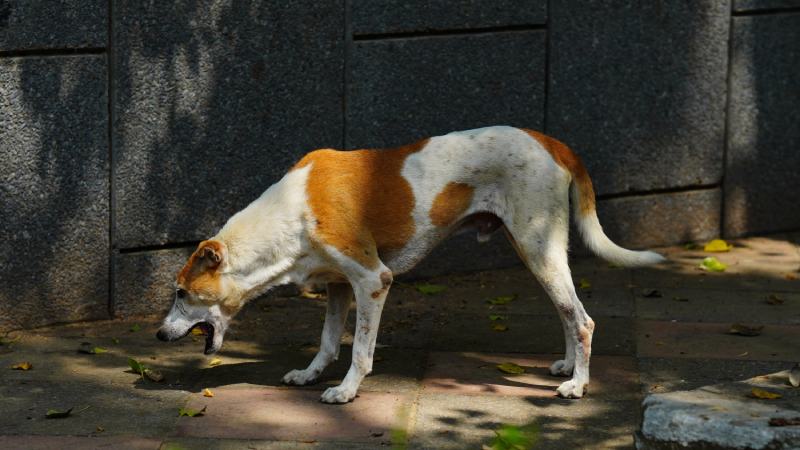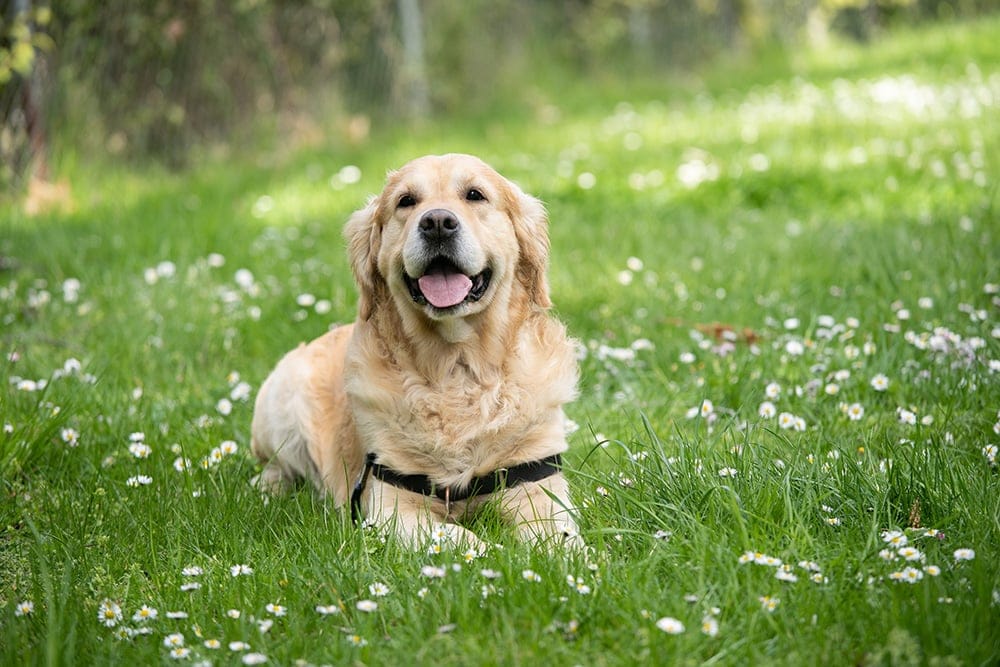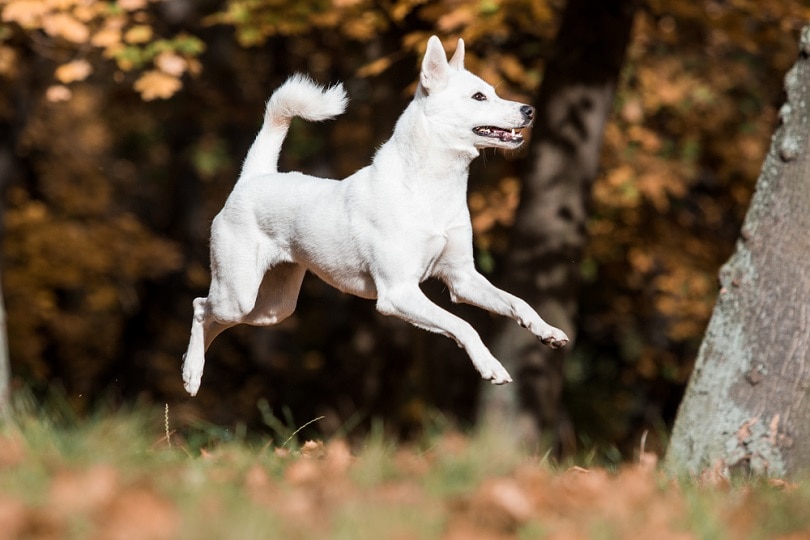How to Protect Yourself from Stray Dogs While Walking: 8 Ways
Updated on
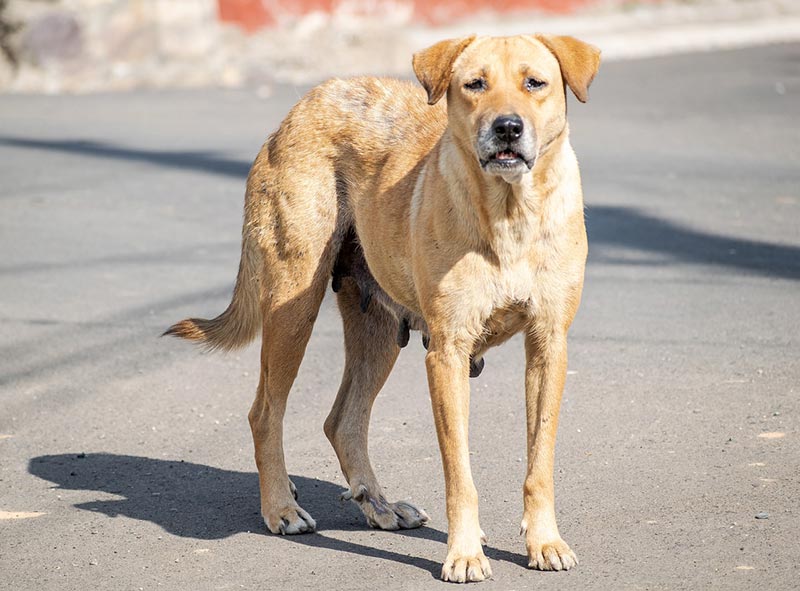
Dogs are not known for being particularly aggressive animals for the most part. However, they can respond aggressively to certain triggers, especially if they are not socialized properly when young. Most dogs are aggressive when fearful. However, excitement and territoriality can also cause aggressive behaviors. You cannot control how other people raise their dogs, either.
While we would all love to live in a world where everyone’s dog is carefully trained and socialized, this just isn’t the case.
Luckily, there is a lot you can do to protect yourself from aggressive dogs when out walking.
The 8 Ways for Protecting Yourself from Stray Dogs While Walking
1. Carry Protection
You should carry some sort of protection when out walking. You can do a lot to prevent dogs from seeing you as a threat or simply avoid places you know dogs will be. However, even these things won’t prevent random dogs from showing up when you least expect them. Therefore, our first recommendation is to always carry some type of protection.
Dog or bear spray works well in these situations. You can get very small sprays and keep them in your pocket while running. They will deter a dog if they are aggressive. You can also carry a whistle, which may deter some dogs. A dog whistle may even be better, as it can cause discomfort for some dogs and make them leave the area.

2. Avoid Paying Attention to Dogs
Many dogs will act aggressively only after you pay attention to them. This doesn’t have to include calling for them or trying to pet them. Even looking at them can make some dogs fearful (or it can excite them, which can also lead to aggression). If you see a strange dog, your best bet is to absolutely ignore them. Don’t even look at them.
Instead, leave the area while watching the dog with your peripheral vision. You should never turn your back on a dog, either. Not only does this prevent you from watching them, but it may make the dog feel a bit braver.
3. Use a Command
The vast majority of dogs out there know a command or two. The most common one is “sit.” Shouting the command firmly may make the dog follow the command, even if that isn’t exactly what they had in mind. You can also try other common commands like “no,” “leave it,” and “back.” Many dogs understand these words.
Of course, this only works if you firmly use the command and if you know the dog is coming.

4. Don’t Run Away
Your first response to a dog being aggressive may be to run away. However, this can trigger your dog’s chase instinct and make them more likely to attack you. Dogs are predatory animals. Therefore, you should be cautious in triggering this chase instinct.
Instead, your best bet is to ignore the dog, as we’ve already mentioned. If the dog does approach you, try some of the direct methods above, such as shouting a command. While you do so, slowly and confidentially back away. Continue facing the dogs until you are somewhere safe or they are well out of sight.
5. Bring Up Your Knee
If a dog tries to bite you, you should bring up your knee to protect your torso. Furthermore, if the dog lunges at you, it may ram into your knee and decide that attacking you isn’t the best option. You don’t want to reach out your arms or legs towards the dog, as these can become easy targets for their teeth.
Bringing up your knee is an easy way to protect much of your torso and deter the attack further.

6. Cover Your Head
Use your hands and arms to cover your head. This blocks the dog’s access to these vital areas. Faces tend to be a common target for larger breeds, as well.
If the dog is already biting you and you don’t have a way to protect yourself (like with a spray), the best option isn’t to fight back. Fighting back may make the dog more aggressive and continue the attack. If you lay still, the dog is more likely to become bored and leave you alone.
Therefore, your best bet is to protect your head and neck with your arms—not using your arms to fight back.
7. Be “Stock-Still”
If a dog approaches you, you should be absolutely still (unless you have spray or some other way to defend yourself). Without any active forms of defense, you should be still. This reduces the risk of triggering the dog’s aggression and prey instincts.
Of course, we do recommend trying some of the methods above if they are available. However, if you don’t have a form of protection, and a command doesn’t work, you should not move. When you are performing these actions, you should only move as much as absolutely necessary, as well.
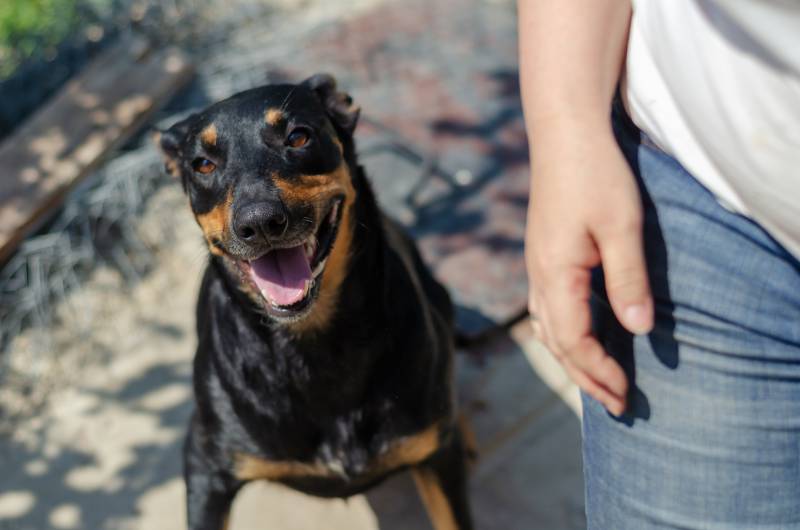
8. Use a Barrier
If you can find a barrier, such as a trash can or even your jacket, these can provide a barrier between you and the dog. The dog may also become less prone to attacking if their initial attempt doesn’t work. Your best bet may be to stand behind a trashcan or bench, keeping it between you and the dog. Eventually, the dog may become bored and wander off.
A barrier combined with protection or shouting can be a huge deterrent to many dogs. It may make you look like a much harder target.
Conclusion
Stray dogs (or even off-leash, aggressive dogs) can be dangerous. While many dogs are considered man’s best friend, some dogs are poorly socialized or may be aggressive for another reason. Dogs can and have killed people, especially high-risk individuals. Therefore, you should always have a form of protection against dogs to use, especially if you know dogs wander your area.
However, it is always a better option to have more than one form of protection. Even if you purchase an anti-dog spray, you should remember not to run or move very much during a confrontation with a dog. You should also try carrying multiple types of protection, such as dog spray and a walking stick.
See also:
- How Big Do St. Bernards Get? Growth & Weight Chart
- How Do Truffle Hunting Dogs Work? Training & Breeds
Featured Image Credit: balouriarajesh, Pixabay

